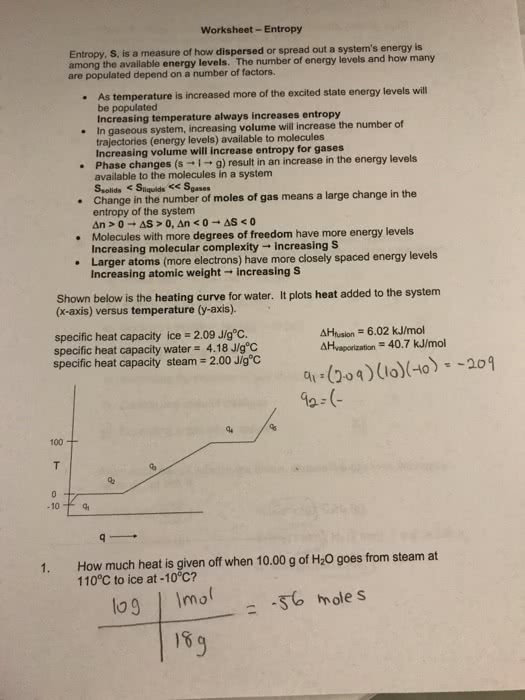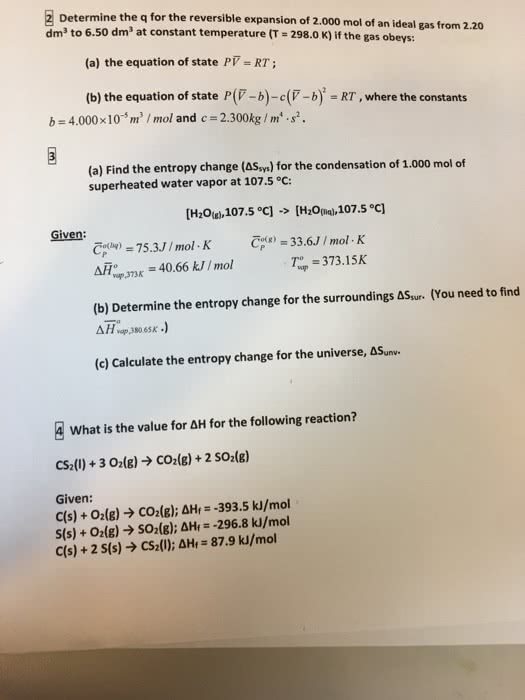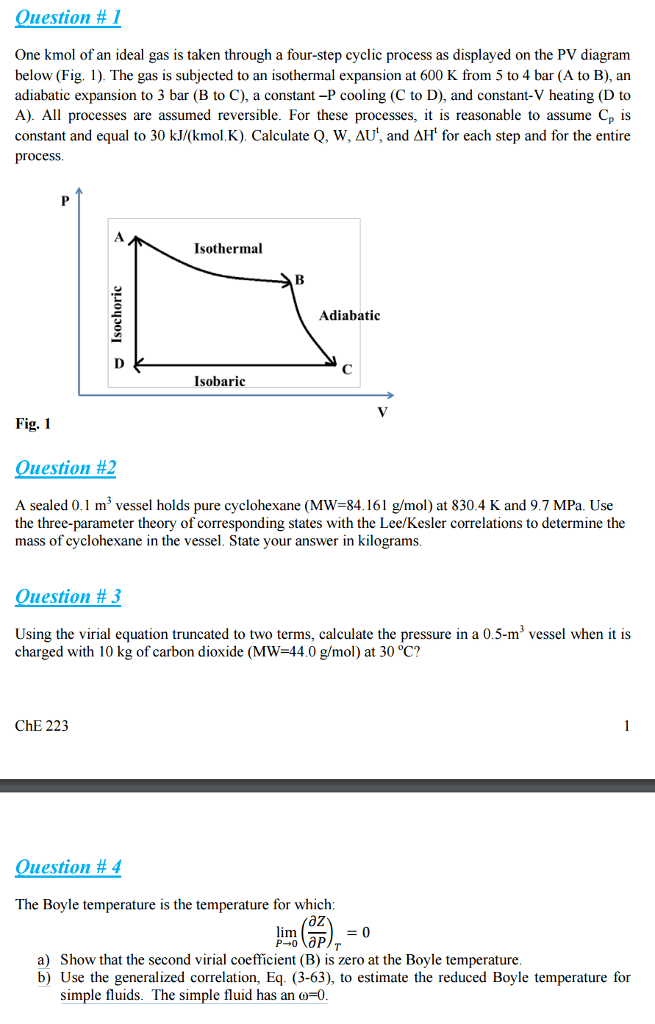University College - Chemistry Chem 112A Lecture Notes - Lecture 21: Boiling Point, Vaporization, Ideal Gas
Document Summary
+ (cid:3281)(cid:3296)(cid:3294)(cid:3021)(cid:3281) + (cid:4666)(cid:4667)(cid:3031)(cid:3021)(cid:3021) (cid:3021)(cid:3277)(cid:3021)(cid:3281: calculating changes in entropy ( s) =(cid:3049)ln (cid:4666)(cid:3021)(cid:2870)(cid:3021)(cid:2869)(cid:4667: (cid:1845)= (cid:3041)(cid:3297)(cid:3031)(cid:3021)(cid:3021) (cid:3021)(cid:2870)(cid:3021)(cid:2869, ** (cid:1845)=(cid:3049)ln (cid:4666)(cid:3021)(cid:2870)(cid:3021)(cid:2869)(cid:4667, (cid:3043)= = (cid:1846) =ln (cid:4666)(cid:3021)(cid:2870)(cid:3021)(cid:2869)(cid:4667: (cid:1845)= (cid:3041)(cid:3031)(cid:3021)(cid:3021) (cid:3021)(cid:2870)(cid:3021)(cid:2869, ** s =ln (cid:4666)(cid:3021)(cid:2870)(cid:3021)(cid:2869)(cid:4667, ex: for 1 mol of a monoatomic gas from 298k 398 k. S = (1mol)(3/2r)(ln(398/298)) = 3. 61 j/k: under constant external pressure, ex: 1 mol of a monoatomic gas from 298k 398k. S = u/t: qp = h and at constant external pressure. S = h/t (usually use this b/c phase changes occur at constant external pressure like: this can be used if we are dealing with a gas at 298k, if it is a liquid at 298k, we can. ) is the heating of the solid truncate the last two terms. Usually we will graph cp/t vs. t and take the area under the curve ( s) to determine this because we can run into the problem of dividing by zero.




